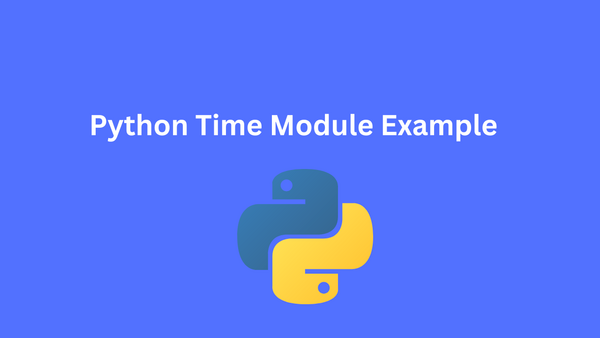Notifications
ALL BUSINESS
COMIDA
DIRECTORIES
ENTERTAINMENT
FINER THINGS
HEALTH
MARKETPLACE
MEMBER's ONLY
MONEY MATTER$
MOTIVATIONAL
NEWS & WEATHER
TECHNOLOGIA
TV NETWORKS
VIDEOS
VOTE USA 2026/2028
INVESTOR RELATIONS
COMING 2026 / 2027
ALL BUSINESS
COMIDA
DIRECTORIES
ENTERTAINMENT
FINER THINGS
HEALTH
MARKETPLACE
MEMBER's ONLY
MONEY MATTER$
MOTIVATIONAL
NEWS & WEATHER
TECHNOLOGIA
TV NETWORKS
VIDEOS
VOTE USA 2026/2028
INVESTOR RELATIONS
COMING 2026 / 2027
About Me
 daniel jamess
daniel jamess With my high work ethic, dedication, and passion for programming, I am committed to providing top quality of software solution beyond their expectations to clients. Innovation and efficiency in software provision are essentials for business success.

Posted by - daniel jamess \
September 30, 2024 \
Filed in - Technology \
data science course python python features of python python assignment help python prorgamming \
382 views \ 0 comments \ 0 likes \ 0 reviews
Introduction
Programming is mainly about the efficient handling of time. The most used programming language, Python, has a module called time used in executing all the operations involving time.
The module provides functions in measuring elapsed time, formatting the time and date, and it is also applied in performing calculations pertaining to time. So far, let's dive into more details of the time module and its key functions along with their application on practical examples.
When it comes to coding then, Python code can be compiled using online compilers that are similar to the Python Online Compiler.
Knowledge of the time Module
The time module in Python gives you a collection of functions that work on times and dates. There are three major categories for these functions:
Time Measurement: It has the following functions that measure elapsed time, as well as getting the current time.
Time Conversion: These groups of functions change time values from one format to another and translate values over different time zones.
Time Formatting The module allows you to convert time and date values to human-readable strings.
Time Measurement
time.time() : Returns the current time as a floating point number, seconds since the epoch (January 1, 1970).
Python
import time
current_time = time.time()
print("Current time:", current_time)
Use code with care .
time.sleep(seconds): Suspends program execution for the given number of seconds.
Python
import time
print("Starting.")
time.sleep(5)
print("Finished!")
Use code with care.
Measure Elapsed Time Record start time, run the code and calculate the elapsed time to determine how long some code takes to run.
Python
import time
start_time = time.time()
#Your code here
end_time = time.time()
elapsed_time = end_time - start_time
print("Elapsed time:", elapsed_time,"seconds")
Code Use with Care.
Time Conversion
time.localtime(): The function time.localtime() converts the current time (in seconds since the epoch) into a time tuple representing local time.
local_time = time.localtime()
print<>("Local time:", local_time)
Code use with care.
#
time.gmtime(): Converts the current time (in seconds since the epoch) to a time tuple of the UTC time.
Python
import time
#
utc_time = time.gmtime()
print ("UTC time:", utc_time)
Code use with care.
#
time.mktime(tuple): Converts a time tuple to a floating-point number representing the time in seconds since the epoch.
Python
import time
#
time_tuple = (2023, 12, 25, 12, 0, 0, 0, 0, 0)
seconds_since_epoch = time.mktime(time_tuple)
print("Seconds since epoch:", seconds_since_epoch)
Use code with care.
Date Formatting
time.strftime(format_string, time_tuple): Converts a time tuple into a string, with the format determined by the format_string.
Python
import time
time_tuple = time.localtime()
formatted_time = time.strftime("%Y-%m-%d %H:%M:%S", time_tuple)
print("Formatted time:", formatted_time)
Be careful with your code.
Format Codes
%Y: Year with century, padded to four digits (e.g. 2023)
%m: Month, padded to two digits (01-12)
%d: Day of month (01-31)
%H: Hour in 24-hour format, padded to two digits (00-23)
%M: Minute, padded to two digits (00-59)
%S: Second, padded to two digits (00-59)
%A: Full weekday name (e.g. Monday)
%B: Full month name (e.g. January)
Running Examples
Simple Stopwatch:
Python
import time
start_time = time.time()
while True:
elapsed_time = time.time() - start_time
print(f"Elapsed time: {elapsed_time:.2f} seconds", end="\r")
time.sleep(0.1)
Code use with care.
Logging Timestamps
Python
from time import time, strftime
#endif
def log(message):
timestamp = strftime("%Y-%m-%d %H:%M:%S")
print(f"[{timestamp}] {message}")
log("Starting application")
#. your code .
log("Application finished")
Code use with care.
Scheduling Tasks using the sched Module
Python
import time
import sched
\\\\\\\\\\\\end
def print_time():
print(time.strftime("%Y-%m-%d %H:%M:%S"))
scheduler = sched.scheduler(time.time)
scheduler.enter(5, 1, print_time)
scheduler.run()
Use with caution
End
The time module of Python offers tremendous powers on functions concerning the time and date values. Knowledge and proper application of such functions leave the after-effect of making your Python applications more functional while executing a set of tasks concerning the time with surety.
Such functions include measuring elapsed time, formatting dates, and scheduling the execution of tasks, among others-due to their tasks falling within the remit of the time module.

Comments